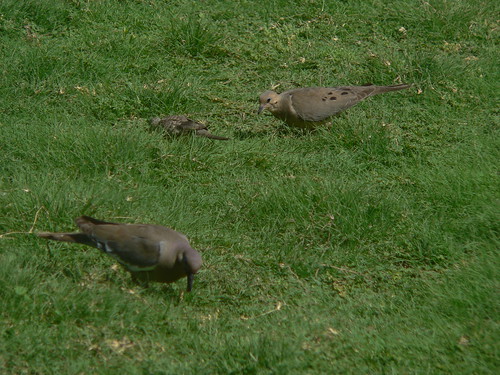Unless you annoy tarantula hawks sufficiently by grabbing them for research purposes or just because you are stupid, they ignore you and go about their business of feeding on nectar, and hunting spiders for wasp babies to eat. They don't just hunt tarantulas, any large spider will do. I have had them run over my bare feet (it tickles) while they were searching my patio for black widows.
There were a dozen or more feeding on the flowers of a Vitex bush in my front yard so I grabbed the camera. These pictures were taken with a macro lens, my camera only a few inches from the wasp. A couple of them bumped into me or the camera as they flew from flower to flower but I was just an inedible obstacle.
 |
| Female Pepsis grossa |
 |
| Male |
This species (Pepsis grossa) is amazing iridescent teal with rusty amber wings in New Mexico. The Arizona variant is all black-teal iridescent, including the wings. The females have curled antennae, the antennae of the males are straight.
About that Sting
I have been stung once by a tarantula hawk, and yes it is intensely painful. It was a "could not move or talk" level of pain for the worst 5 minutes of my life, including the time I got a 600V jolt from a Nixie tube driver. However painful, the sting didn't leave much of a trace once it was over. Compared to the hours of slightly less pain from a bark scorpion sting ... I'd take the wasp.By briefly paralysing an attacker with pain, the wasp can often escape. It's effective enough that very few insectivores are going to try to eat more than one.









